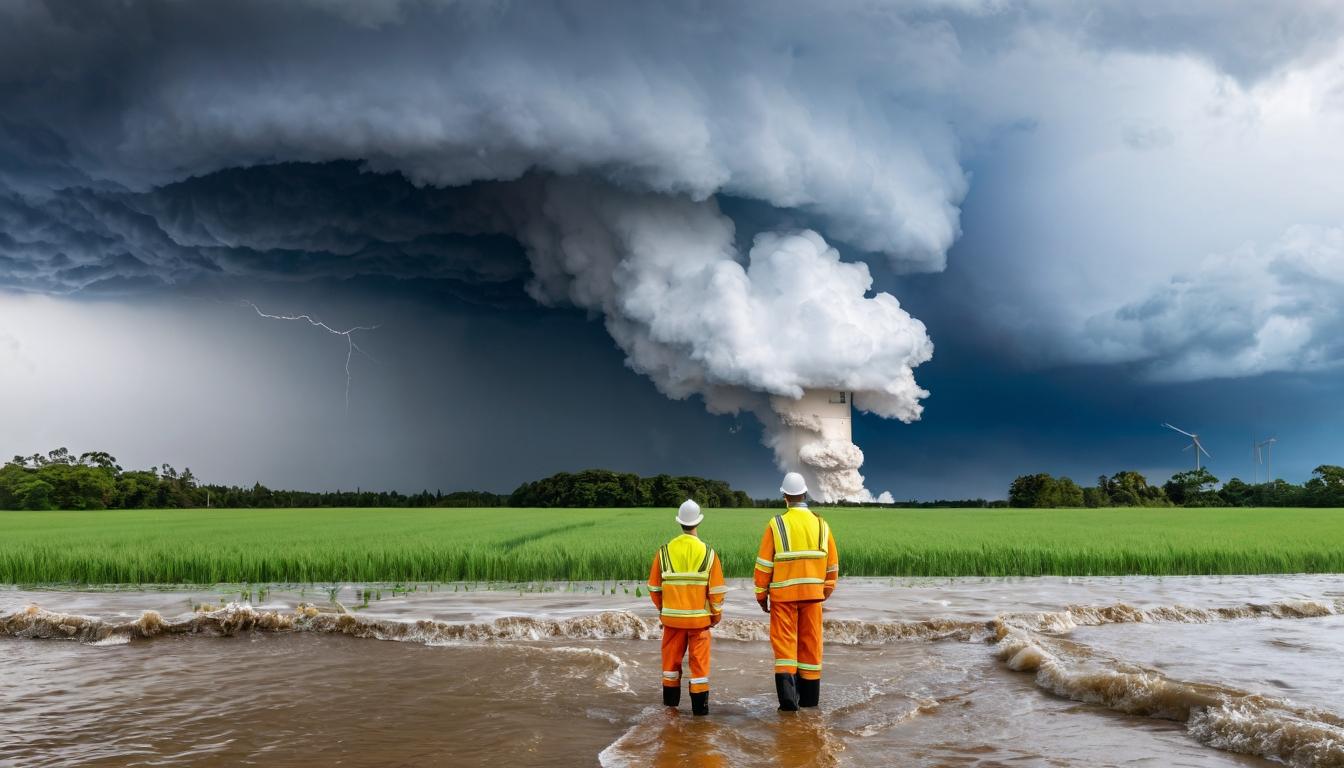The insurance industry has always been a fortress of stability, a bastion of predictability in an otherwise chaotic financial landscape. But beneath the polished surface of quarterly earnings reports and carefully worded press releases, a quiet revolution is unfolding—one that threatens to upend everything we thought we knew about risk, protection, and the very nature of insurance itself.
Climate change is no longer a distant threat whispered about in boardrooms; it's become the elephant in every insurance office across America. The numbers tell a story that should keep every CEO awake at night. In 2023 alone, the United States experienced 28 separate weather and climate disasters that each caused at least $1 billion in damages. That's nearly one catastrophic event every 13 days—a pace that would have been unimaginable just a decade ago. Insurance companies are finding themselves on the front lines of a battle they never signed up for, paying out claims for floods, wildfires, and hurricanes that are becoming increasingly frequent and severe.
The real problem isn't just the frequency of these disasters—it's the fundamental mismatch between traditional risk models and our new climate reality. For generations, insurers relied on historical data to predict future losses. But what happens when the past is no longer a reliable guide to the future? Companies are discovering that their carefully calibrated algorithms are becoming obsolete almost as quickly as they're developed. The result is a growing protection gap that leaves millions of Americans vulnerable and insurance companies facing existential threats to their business models.
Meanwhile, in the shadows of these climate concerns, another transformation is quietly taking place. The rise of artificial intelligence and machine learning is reshaping everything from underwriting to claims processing. While this technological revolution promises greater efficiency and accuracy, it also raises troubling questions about privacy, bias, and the human element in insurance. Algorithms are now making decisions that used to require human judgment, and the consequences are only beginning to emerge.
Consider the case of predictive analytics in auto insurance. Companies are using vast amounts of data—from driving behavior captured by telematics devices to social media activity—to create increasingly detailed risk profiles. The promise is fairer pricing based on actual behavior rather than broad demographic categories. But the reality is more complicated. These systems can inadvertently perpetuate existing biases or create new ones, potentially leaving the most vulnerable drivers with unaffordable premiums.
Then there's the cybersecurity threat landscape, which has evolved from isolated incidents to systemic risks that could threaten the entire financial system. The recent surge in ransomware attacks has exposed the fragility of our digital infrastructure, and insurers are scrambling to develop products that can address these emerging threats. But pricing cyber risk remains notoriously difficult, and many companies are finding themselves exposed to losses that could dwarf anything in their historical experience.
Perhaps most concerning is the demographic time bomb ticking beneath the life insurance sector. As baby boomers age into retirement and younger generations delay major life milestones, the traditional life insurance model is facing unprecedented challenges. Millennials and Gen Z are less likely to purchase permanent life insurance policies, opting instead for term coverage or going without entirely. This shift threatens to undermine the long-term stability of an industry built on predictable mortality patterns and steady premium payments.
The industry's response to these challenges has been a mixture of innovation and retreat. Some companies are pulling out of high-risk markets entirely, leaving homeowners in wildfire-prone areas or flood zones with few options for coverage. Others are experimenting with new products and business models, from parametric insurance that pays out automatically when specific triggers are met to usage-based policies that reflect actual risk exposure.
But the most significant changes may be happening behind the scenes, in the way insurance companies think about risk itself. The concept of 'resilience' is replacing traditional risk management approaches, with companies investing in prevention and mitigation rather than simply paying claims after disasters occur. This represents a fundamental shift in philosophy—from reactive protection to proactive partnership in building safer communities.
The regulatory landscape is also evolving in response to these challenges. State insurance commissioners are grappling with how to ensure availability and affordability of coverage while maintaining insurer solvency. The tension between these competing priorities is creating a patchwork of regulations that varies dramatically from state to state, adding complexity to an already complicated system.
What emerges from this complex picture is an industry at a crossroads. The old certainties are crumbling, replaced by a landscape of unprecedented risks and opportunities. The companies that survive and thrive will be those that can adapt to this new reality—embracing technology while maintaining human judgment, addressing climate risks without abandoning vulnerable communities, and finding innovative ways to meet the evolving needs of a changing population.
The silent crisis in insurance isn't just about numbers on a balance sheet; it's about the social contract between insurers and the public they serve. As climate change accelerates, technology evolves, and demographics shift, this contract is being rewritten in real time. The outcome will determine not just the future of the insurance industry, but the security and stability of communities across America for generations to come.
The silent crisis brewing in the insurance industry that nobody's talking about

